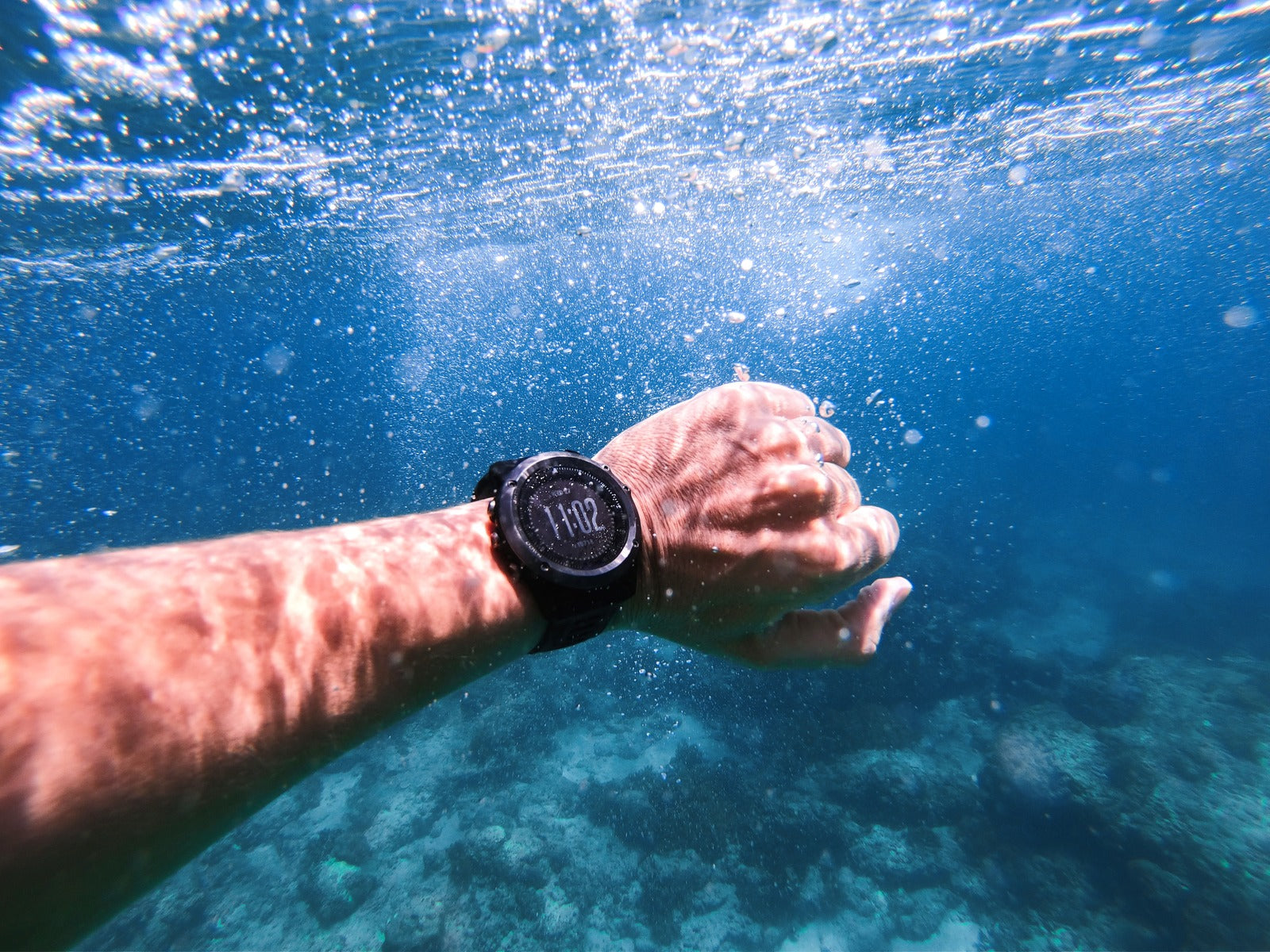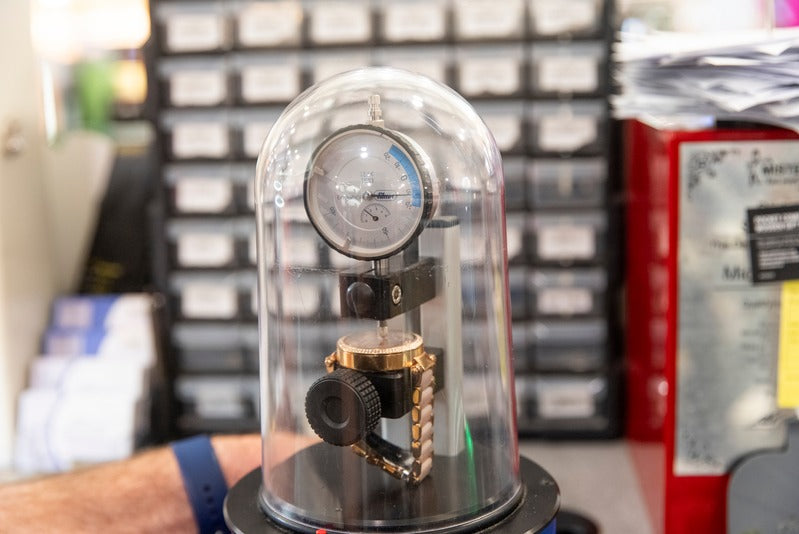
Pressure Testing & Waterproofing
Whether you wear your watch in the shower, at the beach, or just want peace of mind on rainy days, water resistance matters. But what many people don’t realise is that water resistance can fade over time, especially after a battery change or everyday damage.
That’s why Mister Minit offers professional pressure testing and waterproofing services to help maintain your watch’s water resistance and protect it from damage caused by water, sweat, and dust.
What Is Pressure Testing?
Pressure testing checks whether your watch’s seals are intact and able to withstand moisture or water exposure, just like when it left the factory.
At Mister Minit, our technicians use air-based testing equipment to safely simulate water pressure conditions and detect leaks or seal failures without immersing your watch in water.
Think of it as a "health check" for your watch’s internal protection.

Why Replace the Gasket?
Inside every water-resistant watch is a small rubber ring called a gasket, which seals the case and keeps water out. But over time, gaskets can:
Dry out and become brittle
Collect dust, skin oils or grime
Flatten or lose elasticity
When we pressure test a watch, we always check the condition of the gasket, and replace it if needed to help restore your watch’s original water resistance.

Which Watches Need Pressure Testing?
If your watch is labelled with any of the following, pressure testing is highly recommended:
- Water Resistant 50m, 100m, 200m
- Waterproof
- Diver’s Watch
- Watches used in pools, showers, or sport
- Luxury or sealed watches (e.g. G-Shock, Seiko Prospex, Citizen Eco-Drive)
If your watch has sentimental or replacement value, or if you’re unsure, it’s always best to test.
Water damage is one of the most common causes of rusted movements and irreversible internal damage in watches. Even a small leak can cause major problems, especially in smart or multi-function watches.
The Dangers of Button Batteries
Mister Minit wants to remind our valued customers on the dangers of button batteries.
We often have busy lives and can overlook the danger of little batteries lying
around the home within reach of young children.
Many customers are unaware of this danger that lurks when a button battery is swallowed. Batteries can get stuck in children’s throat and burn through the oesophagus within 2 hours. It is vital to get help as soon as possible.
As a household service provider, we can help educate families and spread the word. In an age of accelerating development and miniaturisation of electronic devices, unsecured button batteries are becoming increasingly accessible to young children. Button batteries are used to power many consumer goods including TV remote controls, cameras, watches, calculators, greeting cards, scales, torches, and many others. They are also being increasingly used in children’s toys, novelty items and LED lights.




